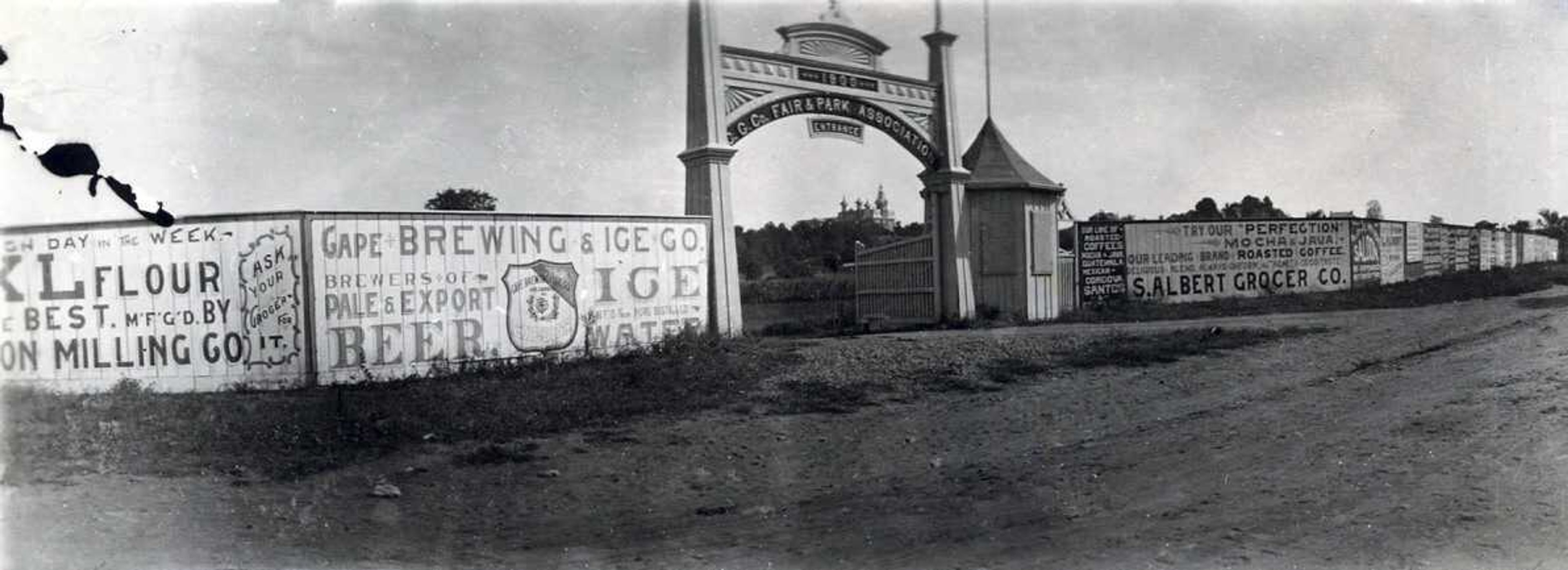A visit to the 1859 SEMO District Fair
The SEMO District Fair dates to 1855, when the General Assembly created the Southeast District Agricultural Society. The district, headquartered in Cape Girardeau, covered 23 counties. The William Bierwirth farm hosted the fair in early days, south of Good Hope and east of Pacific to Frederick Street. ...
The SEMO District Fair dates to 1855, when the General Assembly created the Southeast District Agricultural Society. The district, headquartered in Cape Girardeau, covered 23 counties.
The William Bierwirth farm hosted the fair in early days, south of Good Hope and east of Pacific to Frederick Street. It is likely that Bierwirth leased the farm to the Society. Civil War soldiers destroyed the buildings, and when the legislature revived the fair association in 1870, it bought 100 acres bounded today by Independence, William Street and Cape LaCroix Creek. Attendees considered the site too far out of town, with no public transportation. The fair association declared bankruptcy in 1897, but revived in 1900 in Fairgrounds (Capaha) Park. It ceased after World War I and the Great Depression, but returned in 1939 to Arena Park.
The early fairs were solely for promotion and improvement of agricultural products. No rides, sideshows, musical entertainment or excessive food in those days. We can get a glimpse into one of the early fairs from an account in the Oct. 14, 1859, Charleston Courier newspaper. The editor regretted not attending in person, but relied on "Mr. Martin" and the Cape Girardeau Eagle for details. Premium winners mostly hailed from Cape Girardeau. However, counties from Perry to New Madrid, west to Wayne and Madison, and Union and Alexander counties in Illinois were represented among the premiums.
Modern farmers would recognize most crops and livestock entered. Others, such as rye and buckwheat, are little-known today.
The editor decried the quality of field crops and encouraged others from southern counties to enter: "No place in the wide world can beat Mississippi and New Madrid counties for hay, corn, wheat, potatoes, turnips, millet, and many other field crops, and they should be represented." Belying the myth that early 19th Century Americans considered tomatoes poisonous, "...Mrs. M.H. Moore had the best tomatoes, or as the French calls them, love apples."
Premiums for draft horses and mules, as well as harness and saddle horses, went mostly to exhibitors from New Madrid County. State Sen. Luke Byrne received numerous premiums for horses and mules. Exhibitors brought few chickens, sheep and hogs, and the premium for the largest hog went to Andrew Giboney, owner of Elmwood outside Cape Girardeau. A.T. Lacey showed the best sheep. Most of the cattle premiums went to Cape Girardeau Countians.
Cape Girardeau women won the majority of the premiums in the household department, including jeans, blankets, coverlets, linsey, flannel, hose, socks, thread and yarn. The best embroidery was by Mrs. E. Garaghty, and the second best by her daughter Eliza Garaghty. Mrs. T.J. Gardner took the premium for oil painting and Belle Gardner for the best pencil drawing. Mrs. L.B. Andrews took the premium for the prettiest bouquet.
One thing at the 1859 fair similar to today's event was the great opportunity to see old friends and acquaintances. Although much has changed, that at least is the same.
Connect with the Southeast Missourian Newsroom:
For corrections to this story or other insights for the editor, click here. To submit a letter to the editor, click here. To learn about the Southeast Missourian’s AI Policy, click here.










